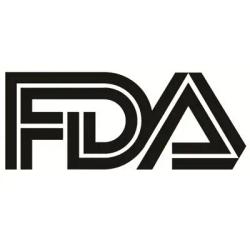
OR WAIT null SECS
Empowering Providers in Eosinophilic Esophagitis Care, With Hilary Ugras, NP
Ugras describes recent evolutions in EoE, including new FDA-approved therapies, updated clinical guidelines, and better understanding of its pathophysiology.
The landscape of eosinophilic esophagitis (EoE) is undergoing rapid transformation, spearheaded by new US Food and Drug Administration (FDA)-approved therapies, updated clinical guidelines, and a deeper understanding of the disease’s long-term course. Once a condition with limited treatment options and diagnostic uncertainty, EoE is now recognized as a chronic immune-mediated disorder requiring lifelong management and shared decision-making between providers and patients.
“It's been a really exciting time to be a practicing provider in the EoE space,” Hilary Ugras, NP, BIDMC, a presenter on an EoE bootcamp at the 2025 Gastroenterology & Hepatology Advanced Practice Providers (GHAPP) conference, told HCPLive, citing evolutions in the understanding of EoE diagnosis and the FDA approval of new treatments, budesonide oral suspension (Eohilia) and dupilumab (Dupixent), necessitating updates to the previous 2013 American College of Gastroenterology (ACG) guidelines.
With these developments, shared decision making between patient and provider has emerged as a fundamental aspect of disease management, especially for younger patients who will require lifelong treatment. Ugras also highlights the importance of understanding how to leverage the different available therapies, something she says the latest ACG guidelines summarize well.
Still, she says there is a need for more treatment options to offer patients, citing how different the 4 available therapies are from one another and the potential benefits of having multiple with the same route of administration.
“I think advancing our understanding of the pathophysiology has come a long way, but there's more knowledge that I think we need to gain, specifically the role of mast cells in EoE, and how we could better manage patients if we understand that pathway,” Ugras said, additionally describing uncertainties regarding endoscopic surveillance for monitoring patients once they’re in remission.
She goes on to explain the pivotal role advanced practice providers (APPs) play in EoE care, noting that while APPs are not involved in certain facets of disease management like endoscopies, they are well-positioned to assist with education and office management. Ugras also calls attention to data describing a growing number of APP prescribers for EoE approved drugs.
“I think people are catching on and realizing APPs are at the forefront of this, and they need to be properly educated so they can know how to appropriately manage,” Ugras said.
References
Dellon ES, Muir AB, Katzka DA, et al. ACG Clinical Guideline: Diagnosis and Management of Eosinophilic Esophagitis. The American Journal of Gastroenterology. doi:10.14309/ajg.0000000000003194
Fitch, J. FDA approves dupilumab for eosinophilic esophagitis in children aged 1 to 11 years. Contemporary Pediatrics. January 25, 2024. Accessed September 12, 2025. https://www.contemporarypediatrics.com/view/fda-approves-dupilumab-for-eosinophilic-esophagitis-in-children-aged-1-to-11-years


